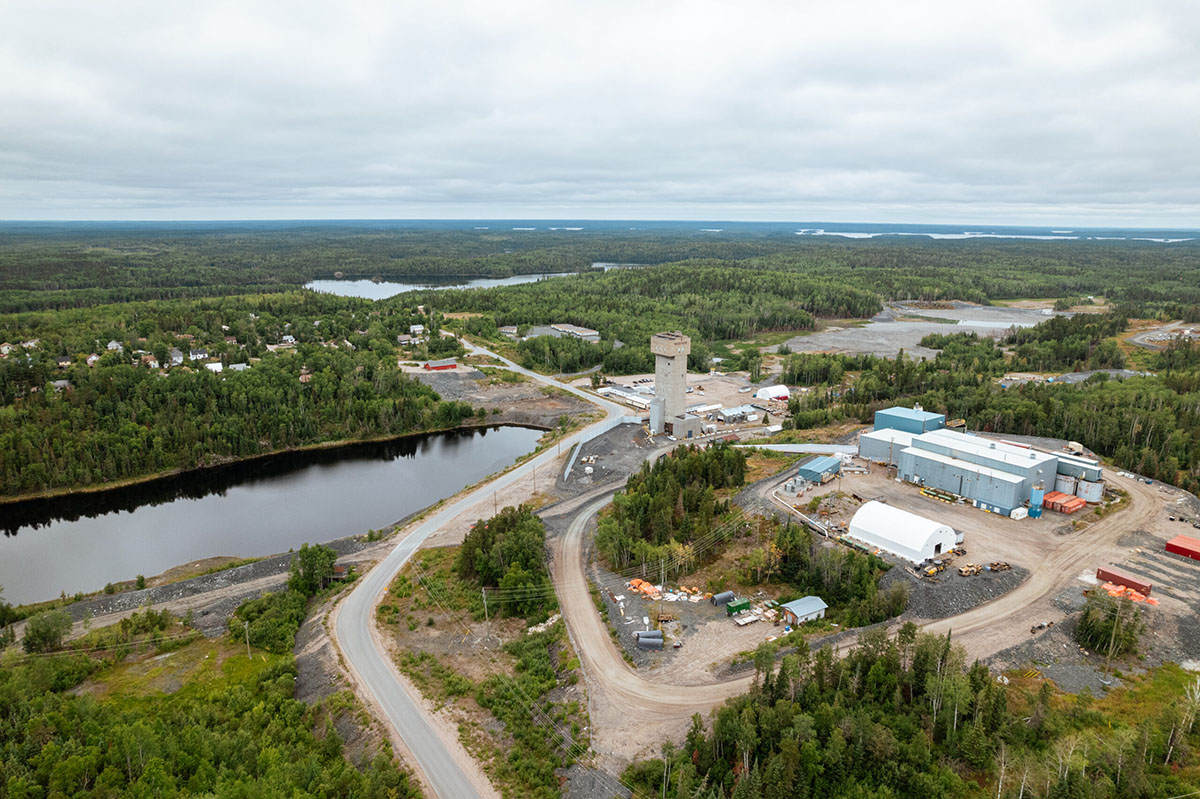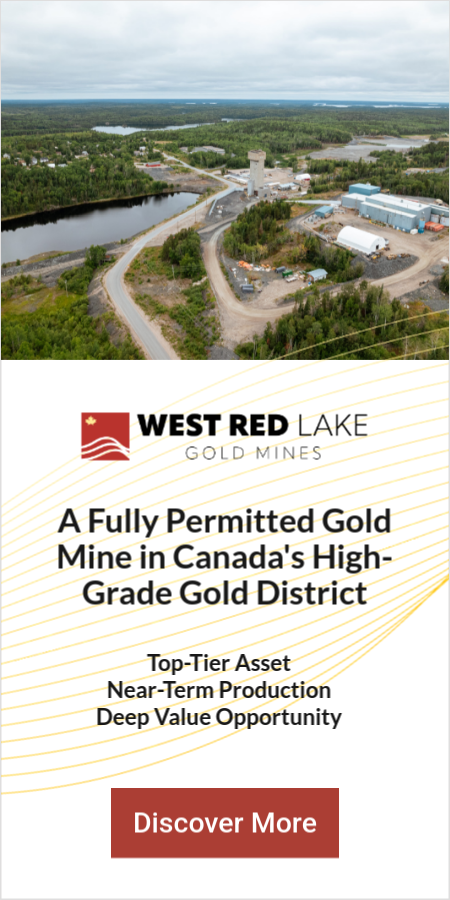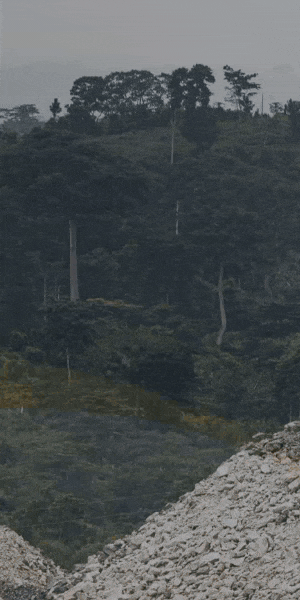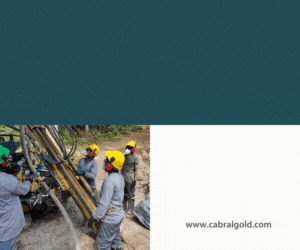West Red Lake Fast-Tracks Madsen Restart to 50,000 oz in 2026, Targets 100,000 oz by 2028

West Red Lake restarts high-grade Madsen Mine, targeting 50k oz in 2026, growing to 100k oz by 2028. Cash-flow positive with $45M+ treasury. No dilution expected.
- West Red Lake Gold Mines is restarting the Madsen Mine in Canada's Red Lake district, targeting commercial production in early 2026 with expected output of 50,000 ounces annually
- The company produced 7,000+ ounces in Q3 2025 and achieved 24% increase in daily mine tons in October, with the operation now cash-flow positive
- Expansion plans include growing Madsen production to 60-65k ounces and developing the Rowan deposit (13 g/t grade) to add 35,000 ounces by 2028, reaching 100,000pa total ounces
- Strong site management team recruited from major mining companies, with critical infrastructure including new maintenance facilities, underground waste storage, and shaft refurbishment nearing completion
- Company holds over $45 million cash and expects to self-finance both Madsen ramp-up and Rowan development ($70 million capex) without additional equity raises
West Red Lake Gold Mines represents an increasingly rare opportunity in today's gold market: a company achieving commercial production at the beginning of a gold bull cycle rather than after years of depressed prices. Led by a management team with demonstrated mine-building expertise, the company is restarting the Madsen Mine in Red Lake, Ontario, one of Canada's most prolific high-grade gold districts with 30 million ounces of historical production over the past century.
The company's approach centers on methodical execution rather than aggressive expansion, a strategy that has enabled them to attract experienced personnel and maintain financial discipline during the critical ramp-up phase. As Gwen Preston, VP Communications, noted, the company is "ramping up slowly" the restart process. This measured approach has positioned West Red Lake to reach commercial production in early 2026 while preserving its balance sheet and avoiding the dilution that typically accompanies junior producer growth stories.
Ramping Production Through Q3
The third quarter of 2025 marked significant progress in West Red Lake's operational evolution, with production of just over 7,000 ounces generating $33 million in revenue to complement the previous quarters' $24-25 million. While these figures represent ramping production rather than full-scale operations, they validate the company's technical approach and demonstrate the asset's ability to generate cash flow during the commissioning phase.
More importantly, October data showed a 24% increase in daily mine tons compared to September, a step-change improvement driven by completion of underground waste rock storage solutions. Preston explained that the company "found out that we had to get deep enough" and "send drones in" to identify suitable voids from historical mining operations for waste disposal. This breakthrough eliminated the need to truck waste material to surface, freeing equipment to move ore instead. "We've been able to just shove all of our waste rock into some of these voids, which frees up the trucks to move ore instead," Preston said.
The company reported it is currently "making money at the mine just now" and was "trading dollars" in Q3 before stepping up production and margins. This cash-flow positive status during ramp-up, combined with over $45 million in treasury, provides substantial financial flexibility heading into commercial production.
Attracting Experienced Mine Management
One of the most significant developments has been West Red Lake's success in attracting experienced mine management personnel from major mining companies, an achievement Preston characterised as validation of the project's potential.
"A year ago, we could not attract those people. Madsen was not proven enough."
The shift reflects both the company's technical progress and the competitive advantage of offering leadership roles in a growth-oriented organisation.
"The sorts of guys who we've brought to site, they're the ones who love unlocking the opportunity. They see what Madsen can become with the right sort of ideas. And so, they love that challenge".
The labour market for mining professionals remains tight across the sector, particularly for specialised roles like millwrights. West Red Lake's response has included infrastructure investments such as a new maintenance shop, recognising that quality facilities help attract and retain skilled personnel just as the company's camp accommodations help recruit miners.
Final Infrastructure for Commercial Production
Commercial production at Madsen hinges on completion of several infrastructure components expected to be operational within weeks. The most significant is refurbishment of the existing shaft, including replacement of the hoist mechanism and construction of a loading pocket. "We'd already done the work to make sure that it is good. Then we needed to replace the hoist and the mechanism," Preston explained. Once operational, the shaft will provide more efficient material handling than the current trucking system.
Additional equipment deliveries include the final haul truck required for planned production levels. Preston noted that "mining is an expensive business to set up" with "haul trucks, scoops, anvil loaders, jumbo drills" representing significant capital investments. The phased equipment acquisition strategy has allowed the company to match capital deployment with operational readiness rather than incurring holding costs on idle equipment.
For West Red Lake, commercial production means "the mine is operating the way that we intend the mine to operate," with all components built and functioning as designed. This standard should be achieved in early 2026, positioning the company to produce approximately 50,000 ounces that year.
Interview with Gwen Preston, VP Communications, West Red Lake Gold Mines
Production Growth Strategy to 100,000 Ounces
West Red Lake's production growth plan follows a dual-asset strategy designed to reach 100,000 annual ounces without requiring external financing. The first phase involves optimising Madsen production to 60-65,000 ounces, with an increase of 10-15% expected in 2027.
"As we get deeper into the mine where there has been less historic mining, you don't have to work around historic workings as much. Ounces per vertical meter at Madsen increase as you go down because it hasn't been mined before. So as we get deeper gets a bit easier, the grade gets a bit higher".
The second component is the Rowan project, located 80 kilometers by road but only 30 kilometers as the crow flies from Madsen. Rowan hosts an indicated resource grading "almost 13 grams per ton," which Preston described as "incredibly high grade" and "asking to be mined". The deposit's characteristics - starting at surface, essentially vertical orientation, relatively wide, and consistent - suit it to straightforward underground mining.
Critically, Rowan will not require mill construction, with mineralised material trucked to the existing Madsen mill for processing. This approach simplifies permitting by qualifying as an advanced exploration permit rather than requiring a full mining permit with tailings facility. "We're pretty confident about it because of the simplicity of what it is that we're setting up," Preston said. Rowan is expected to contribute 35,000 ounces annually starting sometime in 2028, with timing dependent on permit approval.
The $70 million Rowan capital cost, spread over multiple quarters beginning in approximately mid-2026, should be financeable from operational cash flow. "We do expect to be able to finance Rowan internally," Preston confirmed.
Geological Database Guides Targeting
West Red Lake benefits from an extensive geological database comprising over one million meters of drilling at Madsen since the 1920s, data generated by successive operators over decades. This information guides the company's targeting of high-grade "jewellery boxes" within the deposit. "There's an incredible amount of data that points us to where we might find these jewellery boxes," Preston noted. The company has identified one such zone in South Austin for mining in the first half of 2026 and another in lower Austin.
Management acknowledges the geological complexity but emphasises that systematic work yields understanding.
"If you want to remain in control of your geology, you just have to do the work, which is to say, you have to do tightly spaced drilling and you have to make sure that your geologists are very well trained".
Reconciliation between predicted and actual grades has remained strong, giving management confidence in their geological models.
"What we expect to pull out of the ground remains right lined up with what we're actually pulling out of the ground. So, we're really confident in the geology."
The company maintains ongoing drilling programs at Madsen, defining ore zones 12-18 months ahead of planned mining.
Strong Financial Position Eliminates Dilution Risk
West Red Lake's financial trajectory represents a significant achievement for a junior producer: reaching operational status without depleting its treasury. With over $45 million in cash and the mine generating positive cash flow, the company expects no further equity financing for Madsen.
"Now at this moment, we have north of $45 million in the bank. The mine is making money. We do not expect to finance the Madsen mine again".
This financial position resulted from acquiring the asset on favourable terms and executing a disciplined restart plan that prioritised reaching cash flow over aggressive production targets. The strategy contrasts with many junior producers who exhaust their capital during construction and face dilutive financings just as production begins.
Acquisition Strategy Targets Mid-Tier Status
West Red Lake was "built to grow with the gold market," according to Preston, with an explicit target of reaching 300,000 annual ounces during the current gold bull market. "That's the writing on the wall of our office," she said. With a clear path to 100,000 ounces from Red Lake assets, the remaining 200,000 ounces will require additional assets. The company's search criteria focus on:
"an operating asset where we can unlock value or a near to operating troubled asset or assets overshadowed in a large portfolio, under capitalised by a struggling company or some combination of those things where we can come in with our expertise and the energy and time and access to capital and we can unlock value".
Management believes their demonstrated ability to build and operate mines represents a "not super common skill set in junior mining" that provides competitive advantage in identifying and executing value-creating acquisitions. The company's strong balance sheet and cash-generating asset provide financial flexibility to pursue consolidation opportunities as they emerge.
The Investment Thesis for West Red Lake Gold Mines
- Rare New Producer in Rising Gold Market: West Red Lake achieves commercial production in early 2026 during a gold bull market, avoiding the typical pattern of new producers emerging after years of depressed prices
- High-Grade Asset in Tier-1 Jurisdiction: Madsen Mine located in Red Lake, Ontario, a district with 30 million ounces of historical production and proven infrastructure in a stable mining jurisdiction
- Strong Financial Position: Over $45 million cash with mine already cash-flow positive during ramp-up, eliminating dilution risk for Madsen completion
- Clear Production Growth Path: Defined roadmap from 50,000 ounces (2026) to 100,000 ounces (2028+) through Madsen optimisation and Rowan development without external financing
- Self-Funded Development: Rowan project ($70 million capex, 35,000 oz/year) financeable from operational cash flow with simplified permitting approach
- Operational Leverage to Gold Price: High-grade operation (13 g/t at Rowan, "jewellery boxes" at Madsen) provides significant margin expansion potential as gold prices rise
- Acquisition Platform: Strong balance sheet and proven operational capability position company to consolidate additional assets toward 300,000-ounce target
- Low Execution Risk: Existing infrastructure, extensive geological database (1 million meters of drilling), and strong grade reconciliation reduce technical uncertainty
Macro Thematic Analysis
The gold market has entered a structural bull phase driven by central bank accumulation, geopolitical uncertainty, and inflation concerns, creating ideal conditions for new producers like West Red Lake Gold Mines. Unlike typical cycles where producers emerge after years of sector underinvestment, West Red Lake reaches commercial production during the early stages of gold's advance, maximising the operating leverage benefit. Management explicitly designed the company to "grow with the gold market," targeting 300,000 annual ounces through organic development and consolidation. The scarcity of development-ready gold projects after a decade of underinvestment, combined with tight mining labor markets, favors companies with existing assets, proven teams, and strong balance sheets.
"West Red Lake was always built to grow with the gold market. And we want to grow to a mid-tier gold producer during this gold bull market".
TL;DR
West Red Lake Gold Mines is restarting the high-grade Madsen Mine in Ontario's Red Lake district, targeting 50,000 ounces in 2026 with growth to 100,000 ounces by 2028 through Madsen optimization and Rowan development. The company holds over $45 million cash, is already cash-flow positive during ramp-up, and expects to self-fund all development without equity dilution. With proven management, extensive geological data, strong grade reconciliation, and acquisition optionality, West Red Lake offers leveraged exposure to rising gold prices through a rare new producer emerging at the start of a bull market.
FAQs (AI Generated)
Analyst's Notes




Subscribe to Our Channel
Stay Informed



































